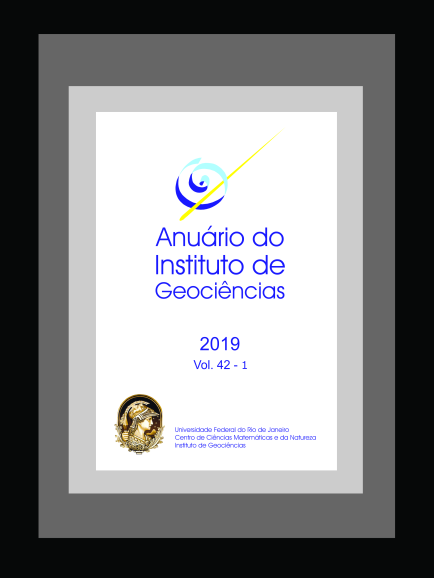Distribution and Growth Morphology of the Recent Microbialites: the Case of Lagoa Salgada, Rio de Janeiro - Brazil
DOI:
https://doi.org/10.11137/2019_1_439_453Keywords:
robial mats, Recent stromatoliteAbstract
Organosedimentary deposits formed by interaction of carbonate and terrigenous sediments are commonly found in the Lagoa Salgada, a holocenic environment located on the north of Rio de Janeiro state which records environmental and biological information of their evolution. Microbial mats are widespread however stromatolites are very prominent and exposed nowadays in the lagoon. Microbial mats were distinguished into two main morphologies, colloform and polygonal mats. It is interesting to note that the colloform ones are not lithified unlike the polygonal ones. Related to stromatolites three main morphologies were defined and classified based on their external morphology and internal structure. Internal structure was further analyzed by sample cutting and thin section study to confirm field classification. Stromatolites are mostly bioherms dome-like and vary from 10 to 40cm high. Morphologically stromatolites are columnar or branched to columnar and coalescence among them are very common resulting in stratiform morphologies. Stromatolitic domal-like bioherms though showing similar internal structure were separated in small and large according to their size; the differences in size are clearly observed and have different areal distribution, which possibly reflects changes in the lagoon paleogeography during the geological time. Also, the identification of differences in the internal structure of stromatolites allows the formulation of hypothesis supporting environmental changes in the Lagoa Salgada.
Downloads
Downloads
Published
How to Cite
Issue
Section
License
This journal is licensed under a Creative Commons — Attribution 4.0 International — CC BY 4.0, which permits use, distribution and reproduction in any medium, provided the original work is properly cited.















